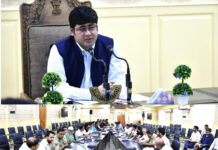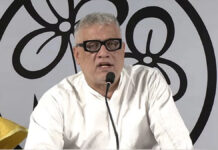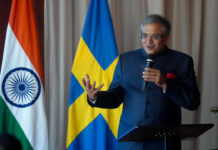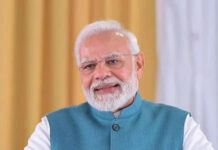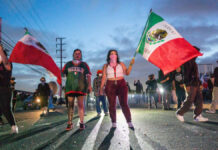BASAB DASGUPTA
The purpose of this essay is to present interesting similarities and also profound distinctions in how the respective minority populations live in American and Indian societies with some speculations about the future trend. African-Americans are the most important minority group in the US while the Muslims are the most significant in India. Let us start with the demographics. In both cases the minority population is around 14 per cent of the total. More precise numbers are 13.4 per cent blacks in the USA according to the 2019 Census and 14.2 per cent Muslims in India per 2011 Census.
The Muslim population is growing at a faster pace than the Hindus (with their percentage increasing steadily from 10 per cent in 1951) and the percentage of black population is increasing faster than that of the white population. (However, the Asian and Hispanic populations are increasing at even faster rates than blacks, because of immigration – both legal and illegal.) Secondly, just like the blacks, the Muslims seem to prefer living in their “own” communities consisting primarily of fellow Muslims and follow their own culture. “Muslim Ghetto” areas have popped up in most large Indian cities after multiple riots, much like inner city black ghetto neighbourhoods. While social interactions between the majority and minority groups exist, they have not resulted in widespread black and white inter-racial marriages or Hindu-Muslim interfaith marriages in India.
Riots have broken out routinely because of some political decision or alleged injustice, resulting in death, looting and property destruction. Minority groups in both countries feel that they are treated as an inferior class and often discriminated against. In any event, they are typically poorer and less educated than their majority counterparts. The movie industries in both countries often send unifying messages; Hollywood does it by creating movies depicting happy racially mixed couples or families and Bollywood often relies on lyrics of popular hit songs. In both countries, there are explicit laws and guidelines against any kind of discriminatory behaviour based on race or religion. However, popularity and admiration of celebrities are universal.
The Muslim actors and actresses have glorified Bollywood screens for decades while the Black athletes are the star attractions in many sports in the US, especially basketball, football and track and field. This is probably where the similarities end. The most significant difference between the two situations lies in the history of evolution of the minority population. The blacks were brought to the US as slaves. It took them centuries to overcome the misery and torture of slave life and reach the present status which is still not acceptable to most blacks.
The Muslims on the other hand are by-products of the invaders from the Middle East, be it the Moghuls, Arabs, Persians or Pathans. India’s independence from the British was the result of a partition of the British Raj into India with a Hindu majority and Pakistan with a Muslim majority. The US was never divided into a white America and a black America even as an internal subdivision. As a result, the black community is forced to live in a country with a white majority. Ancestors of Muslims who live in India had the choice of moving to Pakistan but apparently loved the place where they lived and preferred to stay in India.
While this love did not translate into their unconditional acceptance by Hindus, their presence gave India the opportunity to become a truly secular nation. The Muslims have a rich culture, especially in art, literature and architectural design. Think of the Taj Mahal, the Qutb Minar and poems by Kabir. Indians, including the Hindus have benefited from cultural integration. The blacks lack a unifying traditional culture, partly because the slaves came from multiple countries all over Africa. Nevertheless, they have developed a somewhat superficial “black culture” centred mainly around music and dance. Black music, especially the “blues” had a profound impact in shaping rock and roll and jazz music for generations.
The other significant fact is that Muslims were the invaders and ruled India (populated mostly by Hindus) for centuries. The Mughal dynasty ran from the 1500s to the mid-1700s. Blacks have never ruled the United States. The closest was Barack Obama who was elected as president in 2008 and re-elected in 2012. However, Obama was only half-black, his mother being white. Even black governors are few and far between. It is very difficult to separate the Hindus and Muslims living in India based on their physical appearance, although the Muslims tend to have sharper facial features because of their Middle Eastern ancestry. In the case of blacks and whites, the difference is obvious based on skin colour. What is interesting is that the two countries seem to be going in opposite directions in terms of how they handle the minority populations. Groups like “Black Lives Matter” (BLM) have surfaced in the US in recent years mainly because of the perceived brutality of the white police force against the black youth and other injustice against the blacks.
After the death of George Floyd, a black man, in police custody in 2020, this rage against police boiled over into nation-wide violent riots and lootings. As a result, politicians, corporations, educational institutes, Hollywood, sports organizations, and advertising agencies have made major changes in their practices to be more inclusive to accommodate black folks and their culture. President Biden had nominated Kamala Harris (whose father is black) as his running mate and selected several blacks for his cabinet as well as for Supreme Court nomination. Emphasis on diversity is the mantra. Talks about reparations to the blacks have already started.
India seems to be going backwards. The country is turning from a unique secular country into a “Hindu nationalist” state. The ruling dispensation’s ideology based on “Hindutva” has been evident. Government subsidies to the Muslims for their pilgrimage to Mecca are being phased out. The fact that India has been a peaceful democratic, socialist and secular nation since her independence suggests that a culture with diverse and inclusive views is probably more compatible with peaceful coexistence of all its citizens.
On the other hand, India’s economy was almost stagnant during the so-called “pre-liberalization” period from 1947 to 1991 and then started to slowly expand.
It was Prime Minister Narendra Modi who adopted a capitalistic (neo-liberal) model which propelled the country’s economy to be on par with the leading countries of the world. Perhaps economic prosperity through capitalism and peaceful coexistence a la socialism are mutually exclusive. It remains to be seen if the USA can continue its economic supremacy while moving forward with an agenda of diversity.
There are already concerns on the part of many economists that the massive spending spree by the Biden administration might stall the US economy at some point in future
. (The writer, a physicist who worked in academia and industry, is a Bengali settled in America.)

